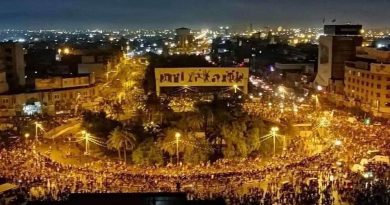Deteriorating Dam Poses Ongoing Threat to Iraqi Citizens
Mohammed Syed
Staff Writer
45 miles north of Mosul, there lies a reservoir of 11.1 billion cubic meters of water. The United States Army Corps of Engineers found it to be “the most dangerous dam in the world.” Behind its concrete, a wave of water up to 100 feet high is waiting to unfurl.
This wave and the following catastrophe could potentially affect 500,000 to 1.5 million Iraqi lives. A report by the European Commission Science Center estimated that it would only take a leakage breach of 26 percent for the dam to unleash a flood.
Mosul would be half submerged within two hours– affecting massive human population, armaments, infrastructure, and transportation. It would take four days for a wave between six to 36 feet to hit Baghdad, 250 miles away.
The water held by the dam has the capacity to devastate the infrastructure of every city along the Tigris banks. The water is estimated to halt its flow at 430 miles from the original dam point.
The World Bank allocated 300 million dollars of funding for repairs, contracted to Italian firm Trevi. The deal was announced by Italy’s foreign minister last February. Italian armed forces are to give security support. They have 18 months to see the project through completion.
Professor Nadhir al-Ansari of the Environmental Engineering Department at Lulea University in Sweden was one of the chief inspectors in the initial construction. “It is just a matter of time. It will be worse than throwing a nuclear bomb on Iraq,” he told Al Jazeera.
The towering 113 meter-high dam was built on a soluble rock foundation under order by former Iraqi dictator Saddam Hussein. The dam was intended to support the state with hydroelectric energy and downstream irrigation.
While planning for the dam commenced in the 1950s, over the span of thirty-years, five various companies consulted for the project found complications in the geography of the region.
Hussein finally secured German Italian group Hochtief Aktiengesellschaf to lead the project in 1981. Construction completed in July 1986, although due to the structural issues there were anticipated indefinite maintenance costs.
Because of the gypsum rock underneath, the dam has needed a consistent maintenance through a mechanical procedure called grouting. Grouting uses fluid concrete and pumps it into the dam foundation through seepage pipes. Iraqi engineers have poured more than 95o,000 tons of grout into the foundation since the dam’s construction in 1981.
The continued military imbalance in the region between the Islamic State and Western-backed forces creates instability for consistent maintenance. ISIS takeover of Mosul in 2014 halted structural work, and U.S. technicians asserted that “unprecedented level of untreated voids in the foundation” have been created in the dam due to ongoing geological erosion.
ISIS held the dam between July and August 2014. The Peshmerga and Iraqi army retook the dam on August 17, 2014. While they captured the dam, Mosul was under ISIS control and halting power would mean shutting off the turbines. In doing so, the catastrophe would have most likely been enabled.
Iraqi Red Crescent Society volunteers have been actively working for communities in the Tigris and Mosul valley to prepare for the collapse of the dam. The global Red Cross and Red Crescent network recently joined efforts with the United Nations’ Development Fund and USAID’s Office of Foreign Disaster Assistance to educate residents on disaster preparedness and safety protocol.
Red Crescent Society volunteers campaigned door to door to spread awareness on the issue and encouraged people to download the Red Cross and Red Crescent mobile apps, which contain information that can help keep families safe if the Mosul Dam fails.
The applications are able to provide warning alerts and basic first aid instructions that can help save lives, and include tools such as instant hazard communication, information on pending emergencies, and step-by-step guides on how to act in critical injury.
Trevi’s advance team to oversee the project arrived to the site last April. Since then, they have integrated underground 3D mapping technology and contributed 92 heavy trucks, which allow the team to perform reinforcement operations far better than the local Iraqi maintenance staff has been able to do in the past.
Almost 400 Italian technicians, alongside 1,200 Kurdish workers, have been laboring on the dam. Rome has also contributed a battalion of 450 elite soldiers for security. This decision came under fire from the Italian public and press for putting Italian lives at stake.
Peace Ambassadors of Iraq, an NGO dedicated to sustainable peace solutions in Iraq convened at Rome last April for the Mosul Dam Symposium. The team of researchers and engineers determined “the question is not if the dam will collapse due to current factors, but when.”
“The reality of a deluge of almost biblical proportions rushing down the Tigris River, killing millions of people, is very apparent,” noted the researchers. “And time is running out.”


